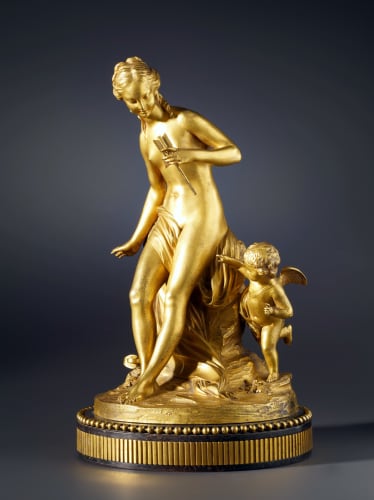Boizot inherited his artistic talent from his father Antoine Boizot (1704–82) who was a designer at the Gobelins. A pupil of René-Michel Slodtz, Boizot studied in Paris at the Académie Royale. In 1762 he won the Prix de Rome and then after a period at the Ecole Royale des Elèves Protégés he completed his education at the Académie de France in Rome. In 1771, the year after he had completed his studies, Boizot was accepted into the Académie but was not received as a full member until 1778. In addition to the Académie he also regularly exhibited at the Paris Salon up until 1800. During the earlier part of his career, Boizot was in great demand, receiving numerous commissions for decorative sculpture such as providing the model for the celebrated clock known as the ‘Avignon’ clock, cast in gilt bronze by Pierre Gouthière (circa 1770; Wallace Collection, London). Other works from this period include a set of marble and bronze caryatids for one of the chimneypieces at Château de Fontainebleau (1772; now Château de Versailles) as well as various works for Château de Louveciennes, where he worked for Madame du Barry. It was probably on her instigation that in 1773 Boizot was appointed artistic director of the sculpture studio at Sèvres. During his career at the royal porcelain factory, which continued up until 1800, he produced a series of more than 150 charming models that were reproduced in biscuit porcelain, in which the austerities of Neo-classicism were softened by a restrained Rococo element. In addition to small-scale intimate groups, he produced the models for numerous allegorical compositions as well as a surtout de table known as the ‘Russian Parnassus’ (1778; Musée de Sèvres), a toilet set for the comtesse du Nord (1782; Pavlovsk Palace) and the so called large ‘Medici, vases (1783; Musée du Louvre).
